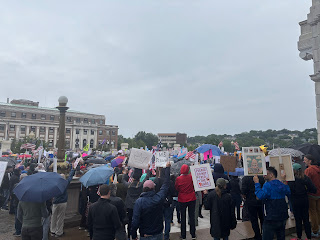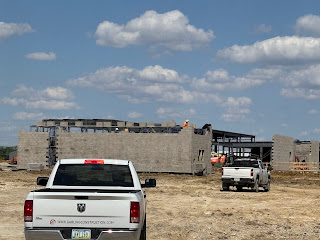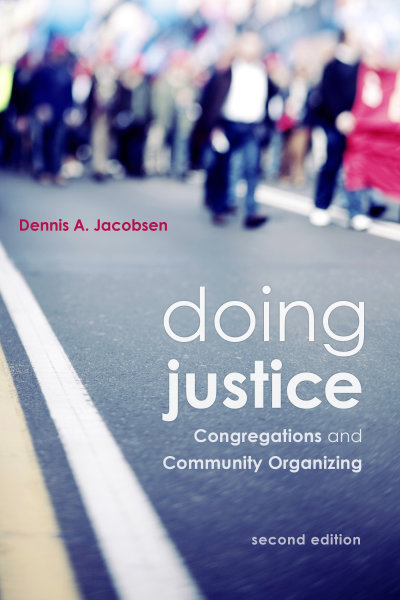At the end of the tour, Cornish founder Buff Chace wondered if there really could ever be a playbook for new/small developers such as they used to be. He described their developments proceeding with a lot of "Band-Aids and glue," and while outside financial capital and historic tax credits certainly easier to get, city politics may be no easier to navigate. They are currently being sued by the City of Providence over a deal with a previous mayor to tax their apartments at a lower rate than the standard commercial property tax charged to all downtown properties.
The day began with the keynote address, shared by architect Carl Elefante of Quinn Evans and Shin-pei Tsay, who heads the City of Boston's Office of New Urban Mechanics. They struck the optimistic notes the Congress needed, while reminding us of the continued challenges before us. Elefante proclaimed a "relevance revolution" in the 21st century, where "every problem and solution is related to urban form.... We have to accomplish it, or we're going to have problems." Tsay noted the recent creation of her position was in response to the complexity of city policy making in the face of climate, economic, public trust, and justice challenges.
 |
| slide from Tsay's presentation |
Moderator Matt Lambert, chair of the CNU Board of Directors, tried to steer the conversation towards the chosen theme of metropolitan coherence, while quoting "a guy in a blue blazer" at last night's cocktail party: CNU has never been about grand slams; it's about bunts and singles.
I also attended a panel on walkable redesign presented by Celeste Frye and Melissa Lee of Public Works Partners. They discussed projects from three different towns in New York. I found myself in a small group with urbanists from New Mexico and Texas, who marveled that they were able to work so productively with the state Department of Transportation. I wonder if they were able to sell their projects to the public because the public already felt pressed by an influx of population. Neither Cedar Rapids nor Santa Fe is so pressed, and San Antonio accommodates theirs through sprawl.
In the evening we attended a reception honoring the publication of The Art of the New Urbanism...
 |
| Victor Dover speaks before a picture from the book |
...before heading to another quiet dinner in lieu of the CNU pub crawl.
Friday, June 13
This is my third in-person CNU, and at each one I've done a bike ride. This year's ride was unusual because it was less about infratstructure than about development, specifically development in Olneyville, a historically poor neighborhood of Providence that long ago hosted a vibrant milling industry.
 |
Olneyville is the darker part of Ward 15;
the conference is in the lighter part of Ward 1 |
The tour was hosted by Kurt Teichert...
...senior lecturer at Brown University's Institute for Environment and Society. Maybe two dozen of us rode along.
Because of the tour's focus, we spent a lot of time on streets. Hence it was the most awkward of the three rides, in terms of interactions with motor vehicles. We did sample the lovely Greenway along the Woonasquatucket River.
 |
| trail sign by Riverside Park |
Recently constructed, one of the trail's objectives was to connect nondriving Olneyville residents to jobs downtown, though (just like Charlotte) that final step is still in process.
 |
| on-street bike and bus lanes, downtown |
 |
| awkwardly twisty ramp by Providence Mall |
 |
| redevelopment of former steel factories |
 |
| Woonasquatucket River from trail |
 |
Woonasquatucket Greenway by Donigian Park
(formerly dubbed "Needle Park" but has benefited
from infusion of investment in the area) |
The Greenway occasionally is linked by regular streets, creating some awkward intersections.
 |
| Delaine Street at Manton Avenue |
Development in Olneyville has not created large-scale gentrification, but there are nonetheless contested spaces, such as the Atlantic Mills Space, which currently hosts artists and small businesses, as well as meetings of the Olneyville Neighborhood Association...
 |
| The Atlantic Mills (built 1863), 120 Manton Ave |
..., but maybe not for much longer as we heard from the president of the tenants' union.
 |
dam at Riverside Park has a fish ladder,
sadly rendered inoperable by 2024 storm |
 |
affordable housing constructed on Sheridan Street
by the Greenway |
 |
interior, Center for Resilience, 249 Menton Avenue,
serves as Olneyville community center |
 |
| soccer game, Joslin Playground, 60 Kossuth Street |
Once back from the bike trip, I checked out Bolt Coffee...
 |
| Bolt Coffee is in another Cornish development |
...where I met one of my fellow bikers who is from Detroit. I bought
The Nature of Our Cities (Mariner, 2024) and
The Art of the New Urbanism (Wiley, 2025, mentioned above) at the Symposium Books shop--expect reviews soon!--and attended a panel on entrepreneurship featuring four owners of small consultancies, hosted by Mike Lydon, author of
Tactical Urbanism. Then I heard
Jonathan F.P. Rose, author of The Well-Tempered City (Harper Wave,2016), give the day's closing keynote.
Rose has something of the futurist about him, and his call for innovations and "big vision" to prepare us for the future had some jargon to it. He called at a couple junctures for systems of mutual aid and mutual support to emerge as insurance and federal assistance are exhausted.
 |
Trinity Brewhouse: We were seated just inside
that window |
In the evening we went to a meetup at Trinity Brewhouse cohosted by CNU Midwest, CNU Michigan, and CNU Ontario. We met a bunch of people from Ohio, so it was good I had Jane (who lived her first 22 years in the Buckeye State) with me.
Saturday, June 14
 |
No Kings Day protest at Rhode Island State House,
looking from Smith Street |
Today America's narcissistic and very anti-urbanist President hosted a military parade down Pennsylvania Avenue in Washington, D.C., at a cost of nearly $50 million, not counting streets that will have to be repaired, inconvenience to residents, and the military's embarrassment at being dragged into a political stunt. This, along with the assassination of a Minnesota legislator and her spouse last night, the assault on U.S. Senator Alex Padilla (D-CA) by
a Cabinet member's security detail, and masked marauders preying on Hispanic workers, make it look like the day of "might makes right" has arrived in America.
Happily, hundreds of No Kings Day protests were organized around the country, including one at the Rhode Island State House, a short (though not easy) walk north of the conference site. We milled about among the crowd, which must have numbered in the thousands, and which was cheerful and peaceful throughout. Americans are going to be a long time repairing the damage Trumpism has done to our communities, but I'm encouraged by the spirit I saw today.
 |
| View of the crowd from next to the State House |
Speaking of restoring communities, I started my day at the morning main stage talk shared by Erin Barnes of Main Street America and Mindy Fullilove, a social psychologist and author of Main Street: How a City's Heart Connects Us All (New Village, 2020). Both acknowledged widespread public pain, while commending creative community-building efforts of all kinds. Then I attended a panel reporting on efforts in New Orleans to reconnect Claiborne Street, part of which was yawmped by I-10 back in the day, resulting in damage to the mostly black community, public health, and history.
 |
| Jennifer Hurley, incoming CNU board chair, at the closing session |
The conference rang down with a late afternoon closing session looking back on this gathering, and looking forward to next year, when CNU34 will be held at various sites around Northwest Arkansas. That region includes Bentonville, home of Wal-Mart; Fayetteville, home of the University of Arkansas; and I trust Springdale, home of the Northwest Arkansas Naturals baseball team. It should be an unusual CNU: representatives from that local committee noted that it's not a traditional city, and is heavily auto-dependent. (Their promotional video showed three giant parking lots in the first minute!) So despite impressive rates of population growth, they invite some urbanist wisdom. Of course, Holy Mountain will be on the scene with all the news as it happens.
SEE ALSO:


























































